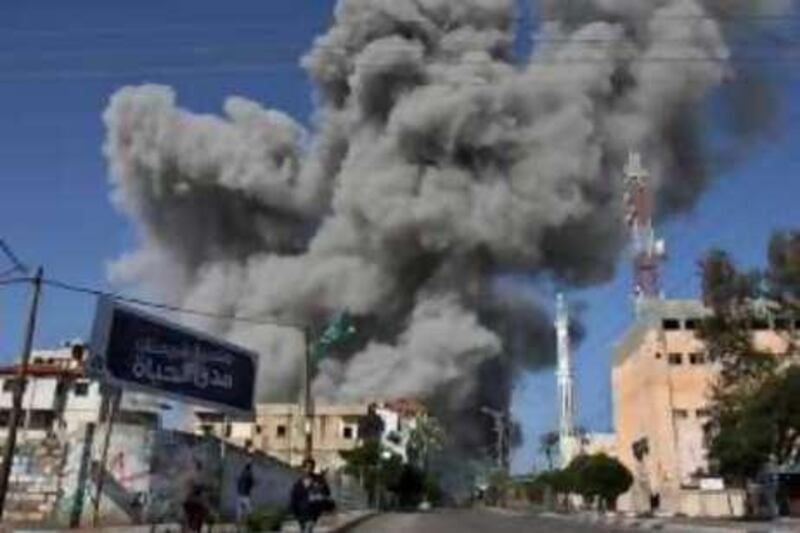The bloodiest 24 hours in decades of the Palestinian-Israeli conflict might have been increasingly predictable as the hours wore down on the recently expired Hamas-Israel truce, but it now seems it was also unavoidable. According to Israeli media reports, the Israeli government laid the blueprint for a massive military operation in the Gaza Strip more than six months ago, at the same time in fact that it was negotiating a ceasefire with Hamas. That six month period of calm, it now transpires, has been a time of preparation for the Israeli army to gather intelligence and fine-tune a plan to oust Hamas from power in Gaza.
Whether it will succeed is another question. Hamas, too, has had time to improve its military capabilities in Gaza, and spokesmen continue to sound confident. But there is little doubt that Saturday's strikes took the group by surprise. Police and security headquarters were the main targets of the air strikes, which killed more than 280 people and continued yesterday. Even if the members of the police and security forces do not constitute the core of Hamas's fighting capabilities, which are concentrated in the Izzedine al Qassam Brigades, the fact that they had not been moved suggests Hamas was unprepared.
The question now is, how prepared are both sides for a full-scale invasion? That Hamas has trained for such an event is beyond doubt. That Israel has practised its scenarios and learnt lessons from its disastrous war in Lebanon in 2006 is also clear. Hamas is not as strong as Hizbollah and does not have a strategic hinterland. But its fighters are at least as motivated and have the support of Gazans. Moreover, continued bloodletting of the scale witnessed on Saturday will increase the pressure on Arab governments to intervene. Israel is, of course, the stronger party and is amassing troops at the Gaza border. But during an Israeli election campaign, it is questionable how many Israeli casualties the Israeli public could stomach and for how long. Perhaps more importantly, assuming Israel had made the decision to invade and would stay the distance until it prevailed, what about the day after? It is not at all apparent that Israel has a clear plan for what should happen to Gaza should it succeed in ousting Hamas, nor what success would mean. The most likely scenario would be short- or medium-term reoccupation after which Israel would hand control of Gaza either to an international force, an idea gaining increasing traction in Israel, or to a strengthened Palestinian Authority under Mahmoud Abbas. But any Palestinian leader who took over Gaza after a bloody invasion would risk looking like a collaborator. Hamas, meanwhile, would not be eradicated, and even if its capabilities were drastically reduced, it would be able to reconstitute itself and come back stronger: more popular, not only among Palestinians but among Arabs in general and with more money and fighters. A full-scale Israeli invasion, although it might be successful in the short term, would probably strengthen Hamas and regional Islamist groups in the long term. Israel may therefore choose to limit itself to air strikes and wait until it sees a reduction in the number of rockets fired back across from the Gaza Strip. That way it would have caused maximum damage with minimum casualties. The rationale behind such a strategy is that it leaves the door open to a renewal of the ceasefire, if and when both sides reach a point of exhaustion. Hamas could claim that it had withstood a massive Israeli assault while Israel could say it had struck a serious blow at Hamas without incurring much damage. Israeli ministers could go into their elections with quiet in the south, while Hamas could begin rebuilding its capacity in Gaza. Before Saturday, that was a scenario most analysts believed likely, since both Israel and Hamas seemed to have had clear interests in maintaining the calm. Even if there were a resumption of hostilities, it was suggested, it would be temporary. But the sheer death toll of Bloody Saturday now makes the likelihood of a resumption of the truce a remote possibility at best. okarmi@thenational.ae





